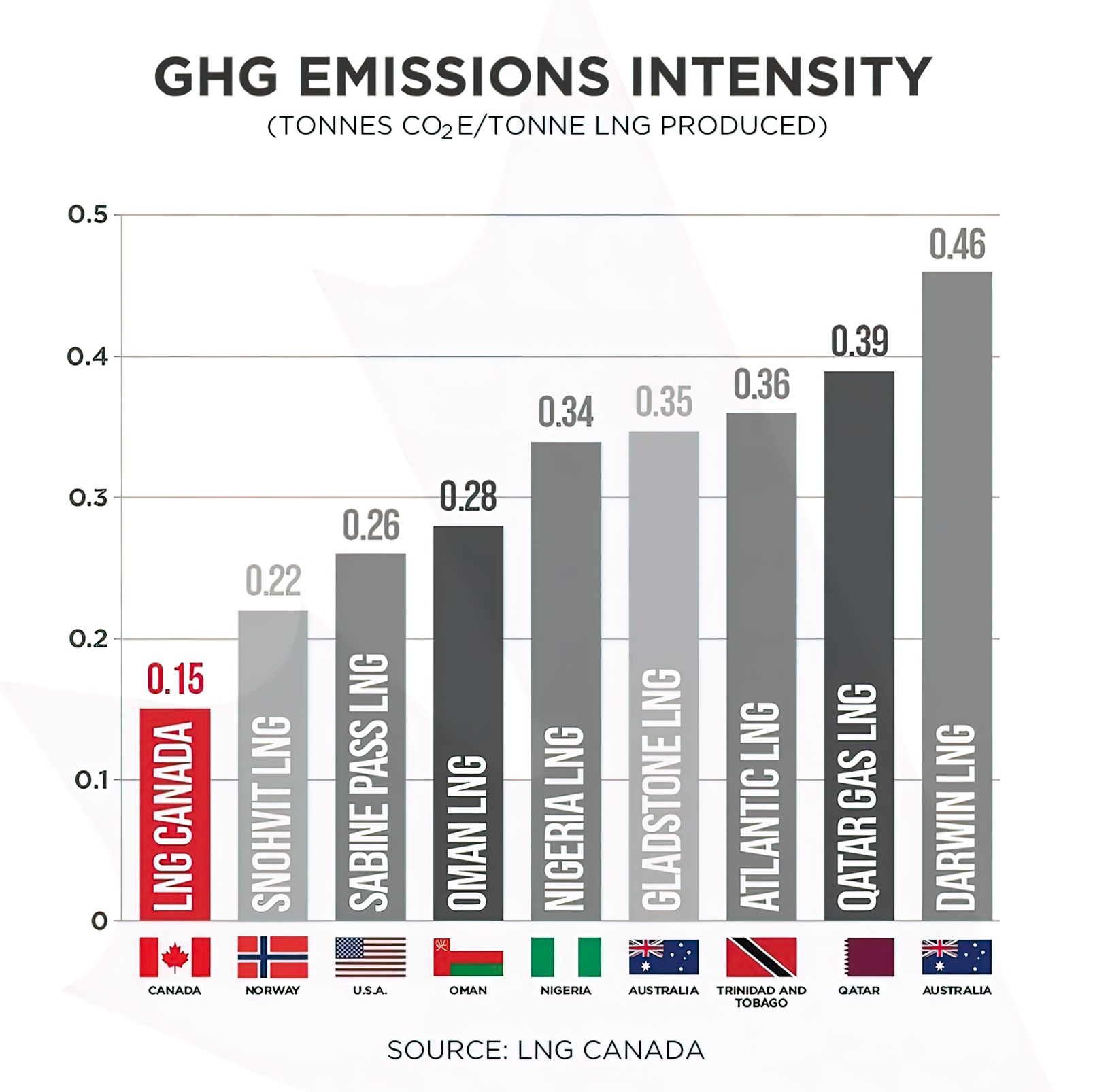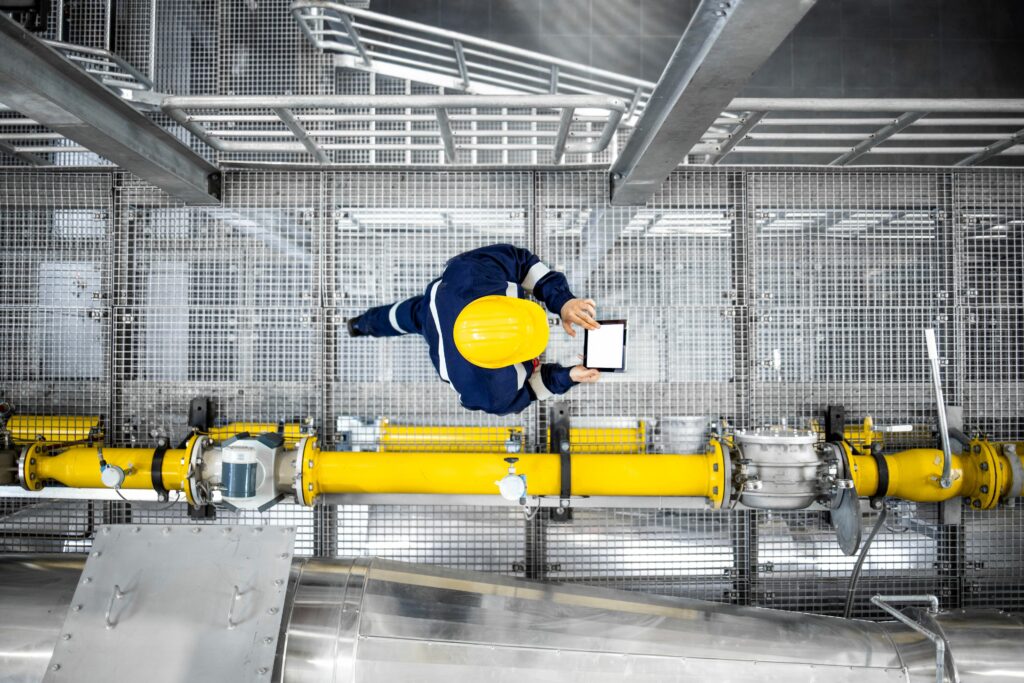By developing new technologies, Canada’s oil and natural gas industry can increase production and lower emissions over the long term. Producing oil and natural gas with lower emissions provides the industry a competitive advantage in global markets. It also enables Canada to play a role in lowering emissions from other countries by displacing coal use for generating electricity.
Industry’s climate positions
Canada’s oil and natural gas industry has demonstrated a commitment to investing in environmental protection and GHG reducing technologies in a world that demands a lower emissions future. Continued investment in innovation and technology is helping drive down emissions intensity (a measure of the GHG emissions released per unit, e.g. per barrel of oil) and positions Canada’s energy industry as part of the global solution needed to tackle the global climate challenge.
Canadian LNG
Using Canadian liquefied natural gas (LNG) to displace coal to generate electricity can help reduce global emissions because natural gas emits less carbon dioxide than coal.
Liquefied natural gas from B.C will have among the lowest CO2 per tonne of any LNG produced in the world. LNG Canada’s low GHG footprint will be achieved through a combination of the lower-CO2 composition of Montney natural gas; widespread electrification of upstream operations like drilling and processing; the use of green power from B.C.’s hydro-driven electrical grid; and the use of highly efficient gas turbines at the liquefaction plant.

Reducing Emissions
In Canada’s conventional sector, production has grown while emissions have fallen.
From 2012 to 2021:
- Natural gas production rose by 35% while carbon dioxide equivalent (CO2e) emissions fell by 22%. CO2e is a measure of the equivalent global warming potential for non-CO2 greenhouse gases.
- Conventional oil production decreased by 9%, with CO2e emissions from production dropping by 29%, demonstrating positive results from the work producers have done to reduce emissions intensity.
- Conventional producers have driven down methane emissions from oil and natural gas production by 34% and methane emissions intensity by 46%.
In Canada’s oil sands, emissions intensity has been reduced.
From 2013 to 2019:
- Production from oil sands in situ facilities grew by 66%, while emissions intensity dropped by 8%.
- Oil sands mining production increased 59% as emissions intensity decreased by 14%.
Methane
Small leaks of methane, called fugitive emissions, come from valves, pump seals, and other equipment used in natural gas drilling and production. Methane is also released when natural gas is flared or vented. Canada is a global leader in reducing the flaring and venting of methane and is developing new technologies to detect and mitigate methane leaks.
- Canada accounts for just 0.5% of global flaring thanks to strong regulations and industry’s commitment to environmental performance.
- Natural gas producers reduced methane emissions by 38% from 2012-2021.
- A report released by the Government of Alberta in January 2022 announced that Alberta’s oil and natural gas industry had achieved the province’s methane emissions reduction target of 45% from 2012 levels by 2025, three years ahead of schedule.
Reducing canada’s offshore emissions
Here are some examples of actions the offshore industry has taken to manage and reduce GHG emissions:
- Reducing flaring.
- Focusing on operational efficiencies and preventative maintenance, which in turn lead to reduced energy consumption, including improving efficiency of power generation units and other key equipment.
- Implementing fugitive emissions monitoring systems that use optical gas imaging cameras, facilitating rapid leak detection and repair.
- Using fuel management and monitoring systems on supply vessels to ensure vessels are operating as efficiently as possible.
- Electrifying key pieces of equipment, such as cranes and batteries.
- Digitalization, including movement to onshore control centres.
- Supporting research and development, including projects in the areas of use of alternative low carbon fuels in marine transportation and new flare reduction technologies.
How we are innovating
Canada’s oil, natural gas and oil sands producers are part of a high-tech, knowledge-based industry. New technology and innovation are critical to developing Canada’s resources and improving environmental performance. Discover how industry is innovation.

